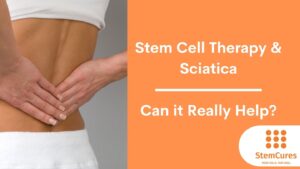How Safe Is Stem Cell Therapy?
Stem cell therapy has been a widely debated emerging form of medical treatment for pain management, among other uses, in recent years. For many adults considering stem cell therapy, there are looming questions about the safety and ethics surrounding this type of treatment as well as the overall effectiveness. To best address these concerns and make informed decisions, it is helpful for prospective patients to fully understand what stem cells are, how stem cell therapy works, and all of its potential benefits. Let’s take a closer look into discovering how safe is stem cell therapy.
What Are Stem Cells?
In the most simplistic terms, stem cells, which are often referred to as “master cells,” are the foundational material of the human body that can develop in a wide range of cell forms with specialized functions. The “daughter cells” produced by stem cells can turn into cells that comprise organs, blood, bone, and muscle, and have the ability to repair damaged tissue. They can also self-renew, turning themselves into brand new stem cells. What makes stem cells so invaluable is that no other cells in the human body have the capability to create new cell types. By harnessing this rare and unique power, scientists are developing methods to combat a myriad of illnesses.
There are four types of stem cells: embryonic, adult, induced pluripotent, and perinatal. Stem cell therapy utilizes adult stem cells, which are found in humans’ fat or bone marrow. While they are less versatile than some of their counterparts because they can turn into a smaller range of specialized cells, increasing evidence shows that adult stem cells can effectively treat countless pain-related issues in patients. It’s also important to note that adult stem cells do not elicit the same ethical concerns that have been widely debated regarding embryonic stem cells.
How Does Stem Cell Therapy Work?
Stem cell therapies use the patient’s own healthy adult stem cells to replace damaged cells within the body. Stem cells are activated when they recognize inflammation, causing them to secrete anti-inflammatory proteins. While it cannot cure inflammatory conditions, stem cell therapy can help the body heal to the point that pain becomes more manageable.
Stem cells are first taken from the patient, before being placed in a centrifuge machine, which extracts the useful parts of those cells. Then, in a non-surgical, minimally invasive procedure,
those concentrated parts of the stem cells are injected into whichever area of the patient’s body is experiencing pain and inflammation. This procedure is designed to signal to the body that it’s time to heal, reducing the need for pain medication once the inflammation is relieved.
Stem cell therapy can be administered by way of four different types of injections: intravenous injections, intra-articular, intramuscular, or through an intrathecal procedure, known more commonly as a lumbar puncture. The method varies from procedure to procedure, depending on the area in which a patient is experiencing pain and which type of injection is best suited to treat it.
After receiving a stem cell treatment, a patient’s body will generate new cells for up to one year, though some patients have experienced decreased pain within one to two weeks. To see the best possible results, patients are encouraged to participate in physical therapy after receiving stem cell treatment. Some physicians may also recommend topical treatments or massages.
The recovery time from a stem cell treatment varies from patient to patient. However, it is recommended that patients take at least one week off from work following the treatment. Patients should also restrict activity in the area where they received treatment for one month following the procedure. Patients may experience increased pain right after the procedure, but it will gradually improve after the first week.
What Are The Benefits of Stem Cell Therapy?
The benefits of stem cell therapy are vast and varied, beginning with the most obvious and the reason for seeking treatment in the first place for most patients: pain reduction. Pain relief from stem cell treatment is often long-lasting, especially when compared to the alternative of taking pain medication, which only temporarily provides relief and in some cases can become dangerously addictive. Because stem cell treatments are regenerative, pain is treated at the source as opposed to simply masking it.
In some cases, stem cell therapy has even been known to speed up recovery times for patients suffering from injuries or in recovery from a surgical procedure. Additionally, some patients experiencing injuries otherwise thought to be beyond repair have found that some degree of recovery is actually possible through stem cell therapy. Generally, patients who have received stem cell therapy treatments experience an improved quality of life and better mobility.
One of the biggest benefits of treating pain with stem cell products is that it is non-invasive and can be delivered without general anesthesia. Not only are these procedures significantly less stressful and painful than surgical procedures, they are also far less time-consuming and run fewer risks associated with complications. Because stem cells are harvested from the patient’s own body there is no risk of the patient catching diseases through stem cell therapy. Additionally, stem cell therapy does not run nearly as great a risk in regard to nerve damage as surgical procedures often do.
Are There Side Effects That Affect the Safety of Stem Cell Therapy?
As is true of nearly all medical procedures, stem cell treatment does come along with some possible side effects. The common of these side effects are fatigue, headache, and nausea. Immediately following the treatment, some patients experience fevers and chills, as well. These side effects tend to clear up within a few hours. It’s also not uncommon for some patients to have a lack of appetite, diarrhea, and dryness of the eye and mouth after the procedure is complete. These side effects typically aren’t serious and don’t put the patient’s safety at risk.
How Safe Is Stem Cell Therapy?
While stem cell technology is still a relatively new science, it has the ability to give patients tremendous results when it comes to pain relief. Many clinical trials have demonstrated success rates ranging from 70 to 80% of patients experiencing significant results.
Stem cell therapy is not entirely without risk, though using a patient’s own stem cells is generally considered to reduce the likelihood of developing unwanted reactions. People who suffer from chronic illness or infections, active cancers, or blood disorders may experience poor reactions to stem cell therapy. Patients with any concerns about the safety of their candidacy for stem cell therapies should speak with their physicians before moving forward with treatment at stem cell clinics.
When considering the safety of stem cell therapy, it’s important to be aware that there are both FDA-approved stem cell therapies and those that are not approved by the FDA. The most common stem cell therapies approved by the FDA are those used to treat patients with blood cancers. Patients should ensure that the clinic performing their stem cell therapy procedure is using bone marrow stem cells, which are the only cells allowed by the FDA.
All in all, for most patients, stem cell therapy presents a safe, effective, minimally invasive option for pain management with a short recovery time and the potential to see years of results. While many types of stem cell treatments are still considered experimental, we are continuing to see this incredible technology being adopted all over the world, improving quality of life for countless patients. Stem cell treatments have the potential to dramatically improve not only pain management, but countless other conditions and diseases, revolutionizing modern medicine over time. For adults experiencing chronic pain, stem cell therapies may be the key to recovery.













